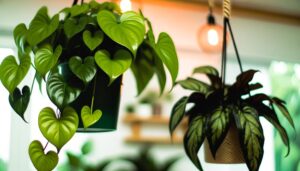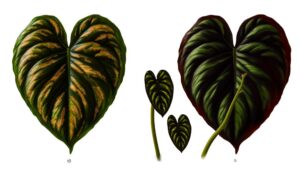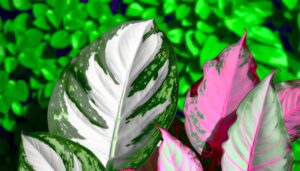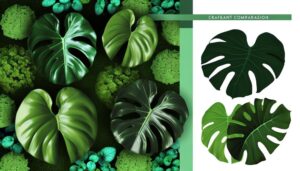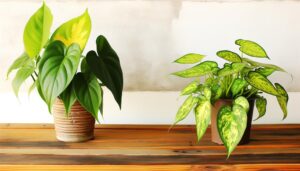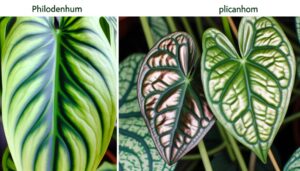Philodendron Lickety Split Vs Selloum: Which to Choose?
Philodendron Lickety Split and Philodendron Selloum exhibit distinct differences. Lickety Split features intricately segmented, glossy leaves and prefers a compact, upright growth habit, ideal for limited spaces.
Selloum, with broader, leathery leaves and a sprawling, tree-like structure, requires more room and support. Both need well-draining soil; however, Lickety Split thrives in slightly acidic conditions, while Selloum tolerates a wider pH range.
Lickety Split demands consistent moisture, whereas Selloum is more drought-tolerant. Pest susceptibility also varies, with Lickety Split showing more resistance to aphids.
These factors are critical for best plant care and further exploration is recommended.
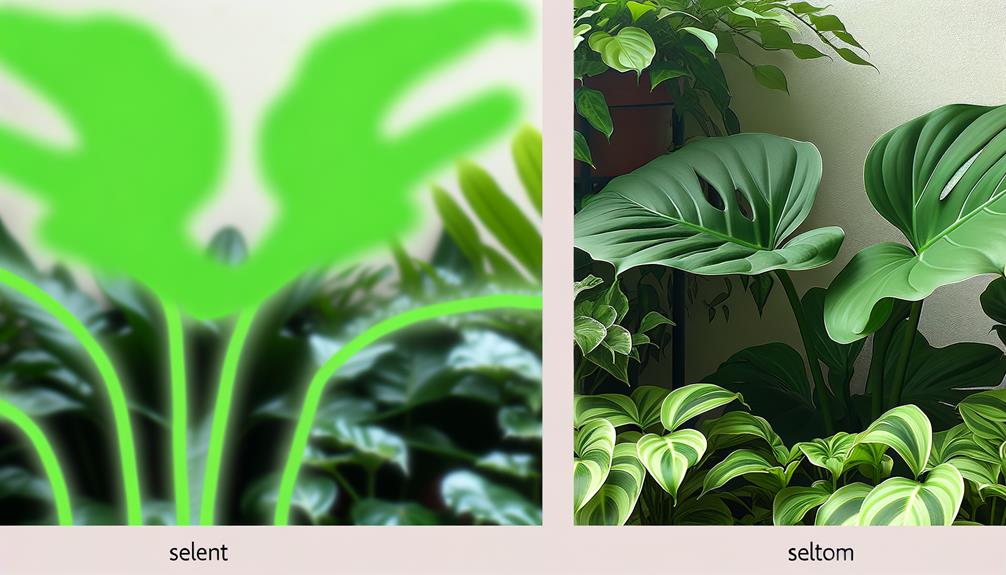
Philodendron Lickety Split Vs Selloum: Key Differences
| Characteristics | Philodendron Lickety Split | Philodendron Selloum |
|---|---|---|
| Leaf Shape | Deeply lobed with split edges | Large, deeply lobed leaves |
| Leaf Color | Dark, glossy green | Green |
| Growth Habit | Self-heading, compact | Sprawling, can grow quite large |
| Size | Up to 1 meter high and wide | Can grow up to 3 meters tall and wide |
| Light Requirements | Full sun to part sun | Medium indirect light |
| Watering | Drought tolerant, needs watering every few weeks | Regular watering, prefers moist soil |
| Care Level | Easy | Easy |
| Common Uses | Indoor plant, decorative | Indoor plant, statement piece |
Appearance and Foliage
Although both Philodendron Lickety Split and Selloum exhibit lush, green foliage, their leaves differ significantly in morphology and texture. Philodendron Lickety Split features dissected, deeply lobed leaves that possess a vibrant, glossy finish. Each leaf is intricately segmented, creating a more intricate aesthetic.
In contrast, Philodendron Selloum, also known as Tree Philodendron, showcases broader, less divided leaves with a leathery texture. The Selloum’s foliage is characterized by its wavy margins and substantial size, contributing to a robust, tropical appearance.
Anatomically, Lickety Split’s leaves tend to be more flexible and thinner, whereas Selloum’s are sturdier and thicker. This comparative analysis underscores the distinct visual and textural attributes that differentiate these two Philodendron species in horticultural contexts.
Growth Habit
Both Philodendron Lickety Split and Selloum exhibit distinct growth habits. Lickety Split favors a more compact, upright form with shorter internodes and a densely packed canopy, making it suitable for limited spaces.
Selloum, on the other hand, tends to develop a sprawling, tree-like structure with an expansive growth and broad leaves that can span several feet, often requiring more space and support.
Understanding these growth habits aids in selecting the appropriate Philodendron for specific spatial and aesthetic needs.
Light and Water Needs
Understanding the light and water needs of Philodendron Lickety Split and Selloum is essential for their best growth and health, as each species exhibits distinct requirements in these areas.
Philodendron Lickety Split thrives in medium to bright indirect light, while Selloum prefers bright, indirect light but can tolerate lower light conditions.
Watering practices differ as well; Lickety Split requires consistently moist soil but should not be waterlogged, necessitating regular monitoring. Conversely, Selloum demands a balance between moist and slightly dry conditions, warranting less frequent watering.
Overwatering either species can lead to root rot, hence proper drainage is vital. Adhering to these specific light and water needs ensures both Philodendron varieties maintain peak vigor and aesthetic appeal.
Soil and Fertilization
Maintaining ideal soil and fertilization practices for Philodendron Lickety Split and Selloum is just as vital as their light and water requirements, guaranteeing strong growth and vibrant foliage. Both species thrive in well-draining, aerated soil to prevent root rot. A mix containing peat, perlite, and pine bark is best.
Fertilization should be balanced, with a 20-20-20 NPK ratio, applied monthly during the growing season.
Comparative analysis reveals:
- Philodendron Lickety Split: Prefers slightly acidic to neutral pH (5.5-7.0).
- Philodendron Selloum: Tolerates a wider pH range (5.0-7.5).
- Fertilizing: Both benefit from diluted liquid fertilizers.
- Soil Mix: Both require similar soil compositions with slight adjustments for moisture retention.
Understanding these requirements guarantees optimal plant health and development.
Common Pests and Problems
Philodendron Lickety Split and Selloum are susceptible to a range of common pests and problems, including spider mites, aphids, and bacterial leaf spot, each requiring specific management strategies for effective control.
Spider mites, prevalent in dry conditions, can be managed through increased humidity and insecticidal soap applications. Aphids, commonly affecting new growth, may necessitate systemic insecticides for severe infestations. Bacterial leaf spot, identifiable by water-soaked lesions, requires improved air circulation and copper-based fungicides.
Comparatively, Lickety Split may exhibit greater resistance to aphids due to its robust leaf structure, whereas Selloum’s larger leaf surface can be more prone to bacterial infections. Understanding these vulnerabilities allows for tailored care regimens, enhancing the overall health and resilience of both species.
Philodendron Selloum Lickety Split
Philodendron Selloum ‘Lickety Split’ is a popular variety known for its distinctive and attractive foliage.
Here’s a brief overview:
Characteristics
- Leaves: Deeply lobed, glossy green leaves with a unique split and ruffled appearance, giving it a dramatic and tropical look.
- Size: Can grow quite large, often reaching several feet in both height and width, making it a striking specimen plant for indoor or outdoor settings.
- Growth Habit: Upright and spreading, with a robust and bushy form.
Care
- Light: Prefers bright, indirect light but can tolerate lower light conditions. Avoid direct sunlight, which can scorch the leaves.
- Water: Keep the soil consistently moist but not waterlogged. Water thoroughly when the top inch of soil feels dry.
- Humidity: Thrives in high humidity but can adapt to average indoor humidity levels. Misting or using a humidity tray can help in drier environments.
- Temperature: Prefers warm temperatures between 65-80°F (18-27°C). Protect from cold drafts and temperatures below 50°F (10°C).
- Soil: Use well-draining, rich potting soil. A mix designed for aroids or one that includes peat, perlite, and orchid bark is ideal.
- Fertilizer: Feed monthly during the growing season (spring and summer) with a balanced, water-soluble fertilizer. Reduce feeding in fall and winter.
Special Notes
- Toxicity: Philodendron Selloum ‘Lickety Split’ is toxic to pets and humans if ingested, so keep it out of reach of curious pets and children.
- Pruning: Regular pruning can help maintain its shape and remove any yellowing or damaged leaves.
Conclusion
To sum up, Philodendron ‘Lickety Split’ and Philodendron selloum display noticeable variations in appearance, growth habit, light and water needs, as well as soil and fertilization requirements.
Despite potential concerns about their similarities, these two species cater to diverse horticultural preferences and environments. A thorough understanding of their distinct characteristics will aid in best cultivation and care.
As a result, choosing between them should be based on particular aesthetic preferences and environmental conditions, guaranteeing successful growth and upkeep.

